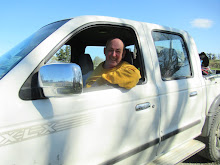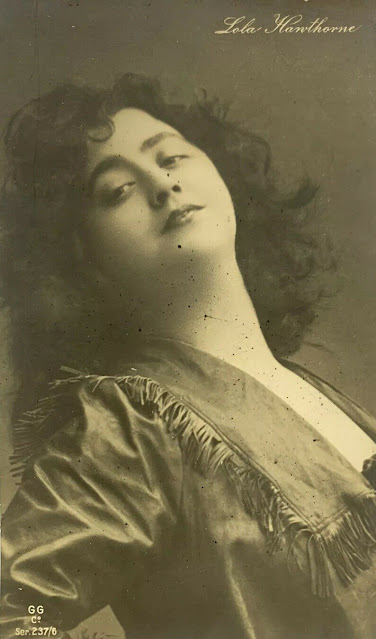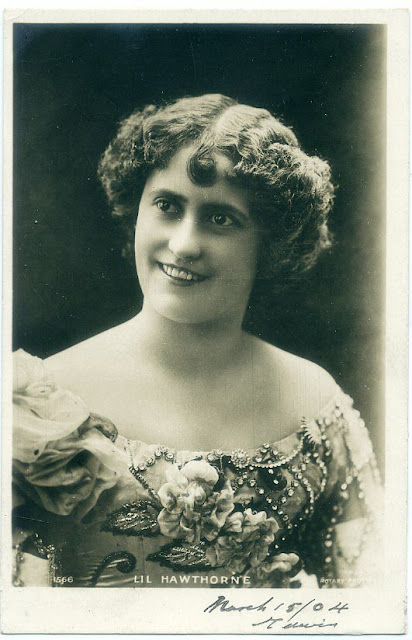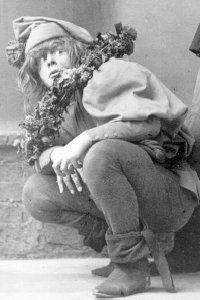Today's e-bay haul got me, once again, launched on a fascinating trip of C19th theatrical discovery. This is 'Cissy Grahame' ...
Oh, yes. I know about Cissy Grahame. She was the lady who sent out tours of musicals in the 1890s. Well, she did, but that was just at the tag end of a remarkable career, and, until today, I somehow didn't really connect her with 'Miss C Grahame', the memorable ingenue of the 1880s.
When I started writing, in the 1970s, the musical theatre was my playground (British Musical Theatre, Encyclopedia of the Musical Theatre, Musical Theatre on Record etc). In the 1990s, that field of interest shrunk to only pre-Great War musical theatre (Emily Soldene, Willie B Gill, Lydia Thompson), then, as circumstances allowed, it expanded once more to the nineteenth-century world of opera and concert (Victorian Vocalists), with the dramatic and comic theatre of the age in the margin. Of course opera, concert, musical theatre and theatre frequently overlapped, and I have found myself, these days, taking a rather Todd-AO view of 'my' era ...
The other month, I penned a wee piece about a not-very-important actor-singer who, as part of his career, had played for Carte at the Savoy Theatre. I was amazed to see that there is an article about him on wikipedia. Oh dear! Barely a mention about the main part of his life, just a screed on the Cartesian portion. Obviously written by a Savoy enthusiast with blinkers. Well, I (fortunately, unpublished) was similarly blinkered as concerned Cissy. To be sure, I knew all about her activity in the musical-comedy world, but I wasn't aware of just how substantial her main career, as a young actress, had been.
And then this charming photo turned up ... so, I investigated ... and wow! Here is what I found.
The lady who would be known as Cissy GRAHAME was born in Wolverhampton. Under what name I am not sure, for she was illegitimate, but she, herself, said that the date was 10 April 1863. Others say 1862. Maybe. When she married, she gave her name as Sarah Collett Grahame, and her father as Thomas Grahame (deceased), barrister. Which is untrue. But I found a Sarah Collett Gibson born in Wolverhampton in 1862 (and a plain Sarah Collett in 1863) ... I guess only a birth certificate would tell all. Anyhow, 'Thomas Grahame barrister' has apparently been identified (by others, presumably with reason) as 48 year-old QC Thomas Phinn, sometime Liberal MP for Bath, Judge Advocate of the Fleet and, to all appearances, the confirmed bachelor that he died as, in 1866. Oddly enough, in the fatidic 1861 census, at the time when he was theoretically fathering Sarah, Phinn was living in rooms at 50 Pall Mall, and the chief domestic of the place was a Mrs Jane Gibson. Maybe Mrs Gibson had a teenage daughter ... for, when Cissy was born, her mother was about 15 years old. I imagine that Wolverhampton is not relevant, and that the pregnant teenager was merely sent, or went, to Staffs to have her baby. But, of course, that is not proven fact, merely a familiar scenario.
Oh, when Mr Phinn died, he left nearly 20,000L, the main beneficiary being his sister. There were minor bequests to 'family and friends' but Mary ?Gibson/Graham[e] and their child don't seem to be mentioned. Not in the press reports of his testament, anyhow!
 |
| Thomas Phinn |
The www tells us 'she [Cissie] was the daughter of an actress and she took her first stage role at the age of thirteen'. Hmmm. Sadly I cant find Mary and Sarah in the 1871 census, so I don't know if Mary was an actress, or if she latterly became one. 'Grahame' looks like a stage-name, to me. There were a heap of 'Miss Grahame's on the 1860s and 1870s stage. But, no! Here we are, Mary worked as 'Miss Giffard'.
'Age of thirteen'? Perhaps. Maybe they were living in London, and pretty, little 'Miss Grahame' would easily have found bit-work. Is she the 'Miss Grahame' as a virtual extra in Loo at the Strand? The Miss Grahame as a Christmas babe at the Standard is Rose, there are so many ...
I spot her for the first time in January 1877, at the Queen's Theatre, Edinburgh, playing the role of Anne Chute in The Colleen Bawn. From Edinburgh, she moved to Hull, manager: Wilson Barrett , and his company. There she can be seen in Little Bo Peep, Land Ahead (Mary Morrow), The Shauraughn (Arte O'Neil), Stolen Kisses (Cherry Spirit), Queen's Evidence (Ada Summers), in Much Ado About Nothing (Hero), The Schhol for Scandal (Maria), Money (Georgiina Vesey) as well as Adrienne in Proof, which Barrett took on tour. Then Barrett's company moved to Leeds
The next management under which she would appear was that of John Hare. At 16 years of age, Cissie was hired to make 'her first London appearance' at the Royal Court Theatre. She was cast as Lucy Franklin in a revival of A Scrap of Paper (4 January 1878) alongside Willie and Madge Kendal and, although she was judged a little 'emphatic', she was much liked. She would quickly shake off the dust of the provincial style, as she settled into a long run of another French adaptation, The Ladies Battle and Cousin Dick, and then -- as Hare and the Kendals moved on to the St James's Theatre -- as the ingenue of Val Prinsep's Monsieur le Duc (1879). After a visit to Hull, Cissy returned to the Royal Court, where she played alongside Modjeska in Mary Stuart, then to the Prince of Wales for A New Trial with Charles Coghlan and Amy Roselle and In Honour Bound (Kate Dalrymple). As ingenue of the theatre she was cast in the next piece, and thus created the role of Nellie in The Colonel. She would play it right throughout the comedy's very long run.
 |
| As Nellie in The Colonel |
There followed a season with the Bancrofts and Modjeska in Odette (Eva Treherne) at the Haymarket, and Wilson Barrett engagements as leading lady, in the provinces, in such as The Lights of London (Bess Marks), The Silver King (Nellie Denver) and Claudian (Almida).
In 1884, she joined the company at the Vaudeville Theatre under Tom Thorne, where she appeared in Confusion, Saints and Sinners, Under Fire, Loose Tiles and Open House, before being hired for the Adelphi. Cast as Arragh-na-pogue, she found that the Adelphi was a bit vast for delicate playing, and moved on to Her Majesty's (Secret Service), then to the Strand (The Rubber of Life), the Crystal Palace with Edgar Bruce (Crutch and Toothpick) and, then, the Globe where she appeared in The Pickpocket (Mrs Hope) but also in a little dramatic forepiece entitled Barbara in which she made a personal hit.
She appeared as the baddie (to Ellen Terry's goodie) in the trial of the blank verse The Amber Heart at a Lyceum matinee, but reverted to her usual successful role-play-management combination when she joined the Comedy Theatre for the long-running The Arabian Nights and for Uncles and Aunts, to which was adjoined a little piece entited Fennel. Fennel was the work of one Jerome K Jerome. Mr Jerome would soon become important in Cissy's life.
In the meanwhile, however, the young actress had accepted the worst engagement of her life. He was called Edward George Saunders; he, like she, was 24 years old, and a lawyer. You would have thought she might have learned about lawyers from her mother, but ...
Anway, she stuck him out for a decade before she divorced him for a long list of distasteful behaviours, and of infidelities, the last of which was an affair with an actress, Winifred Hare. However, in her petition, Cissy took care to mention a couple of Mr Saunders's other women as well. Tough luck, Winnie.
 |
| Winifred Hare |
Cissy appeared for Mrs Oscar Beringer at the Opera Comique, at Toole's in The Bungalow, and then she took Terry's Theatre and produced a play on her own behalf. The play was entitled New Lamps for Old, it was by nice young Mr Jerome K Jerome, and Cissie was a success both with it and it it.
Next up, she put on The Judge, again with W S Penley starred, at the Opera Comique, then Jerome's The Maister of Wood Barrow, before leasing the provicial rights of the famous Triple-Bill (A Pantomime Rehesal etc) from C J Abud. The programme, with Cissy herself featured in one volet of the triptych (A Commission) toured from 1892 till 1894, when she took up the provincial rights of the hit musical A Gaiety Girl with equally happy results...
Two attempts to launch a new musical piece in All Abroad and On the March were mildly received and Cissy retreated from the arena ...
Instead, she took up the management of the Broadway Theatre, New Cross. She ran that house from 1897 to 1899, during which time she divested herself of Mr Saunders and found herself a new husband. This one was made of much better stuff.
William Edward Allen (b Belfast 2 March 1860) was the son of Irish printer, David Allen, whose business he had expanded into a vastly successful theatrical printing company which had just gone public. Cissy joined him in marriage in 1898, and in the business as well, and the two produced not only three sons, but built up a large and fruitful theatrical empire which included the ownership of a number of provincial theatres. At Allen's death in 1919 (12 April), Cissy, with the support of her sons, took over the running of the firm ... the whole tale is told in David Allens: the history of a family firm 1857-1957 written by Cissy's son, William Edward David Allen.
Our heroine died in 1944, after a memorable triple-headed career, in which she had made few misjudgements and suffered few failures...
Tidy up time. Mr Saunders married Ellen Mary Winifred Hare as soon as the divorce was through. Too soon afterwards, they had a daughter, Winifred Maude Ellen Beatrice (14 January 1898). E G Saunders built and briefly managed the Coronet Theatre, Notting Hill, the Terriss Theatre, Rotherhithe and the Camden Town Theatre, and presented there an approximate version of Chilpéric in cahoots with the original English producer, 'Richard Mansell'. Winifred was top-billed as Frédégonde, Courtice Pounds played the title-role, and a bundle of Englishmen were credited with 'additional material'. Saunders went bankrupt, in 1906, over the construction of the Waldorf Theatre, Aldwych. That seems to have been the end of his romance with the theatre. I'm told he died in 1930.
Winifred died 26 February 1953. She left 532L 18s 1d to be executed by Winifred Maud[e] Ellen Beatrice Lugg 'actress, playwright and clerk at the corn exchange' ...
Having finished this article, I find a detailed biographical piece on Cissie in The Era Annual of 1896. It clears up that 'age 13' business. Mother was a member of the Hull stock company, and thus and there it was that little Cissy first went on stage.
Mary Grahame (or Gibson or Giffard or whatever) lived all her life with her daughter and her two successive husbands and children. She outlived her seducer/paramour by three-quarters of a century, and seems to have died in 1931, aged 86. Oh, in answer to my own query: I first meet Miss Giffard on the stage in the Bradford company of 1868-9 ('Miss Giffard ... would make an acceptable actress if she could overcome her diffidence'), so I think maybe she became an actress, after Cissy's birth. I spot her in Willie Worboys's Benefit at St George's Hall in 1872, and -- good gracious! -- in the Swanborough's Strand Company, playing opposite H J Byron. (I think this may be a different Miss Giffard). In 1873 she advertises from 'Lancing House, 9 Mount Ararat, Richmond'. And yes! There she is, in 1875, in Sefton Parry's company at Hull, playing the Countess de Linière in The Two Orphans. Miss M A Giffard in Cyril's Success. Opposite Henry Ashley in The Adventures of a Love Letter and as Mrs Swandown in Everbody's Friend (ie To Oblige Benson), opposite Mrs Rousby as Queen Mary in Twixt Axe and Crown, playing leads with the company at Edinburgh, and then sharing the stage with her daghter, as Madame Deprêt, in Proof ...
And what do I see? When Cissy is at the Royal Court, Miss Giffard is in the company too. And here she is, playing Lady Capulet to Modjeska's Juliet and Wilson Barrett's Romeo, as Hannah Kennedy when Modjeska and Cissie play Mary Stuart at the Court, at the Princess's with Barrettt as Aunt Fanny in The Old Love and the New 'a capital portrait of a woman whose life has been blighted by an early and unfortunate attachment'. Hah! She wouldn't even have had to act! And, oh goodness, she too had a role in The Colonel. It's really rather rude to just write 'mother was an actress': Mary deserves at least 'mother was the actress Miss M A Giffard'.
 |
| Cissy |
PS I see also that W MacQueen Pope 'a leading authority on the British stage' (wot!) also wrote a piece about Cissy. Poor old 'Popey' was, if anything a 'misleading' authority, specialising in the good old 'history as I remember it, and improved ad lib' kind of writing. I'll stick to the Era Almanac. Except I don't need to, because now, chuckle, I've Done It Myself!
















































